Spanish Crusaders vs Moors
In February a new Baron's War supplement or rather stand-alone was announced, named Outremer covering the Crusades. And with the range being sculpted by the talented Paul Hicks, I did take interest in that and went on with my decision covering some parts of my collection.
A while ago, I set up a Crusader force based around the Perry Miniatures former Norman range (now sold as crusaders), to build up an army around the Spanish and their fight to reconquer the Iberian peninsular. While I was thinking of which projects I would cease, these were of an unsure status. I didn't have the enemy force for them, and with them being initially thought to be used for Saga, I would like to open up the stock for Rampant and other mid-sized battle systems as well. In the end, as I want and need to reduce my stock, the Ancient warbands of Romans, Iberians and Germans would have to go.
The initial build was aimed at around 6 points of Saga, with a bit of side board. They are mostly build, and even partially base coloured. I added a bit more cavalry to cover a few templars of a Knight Order and build some characters.
Now for the tricky part, putting them in a historical context.I don't water proof historical button counting accuracy, but it should stand of somewhat of proper legs.
I started with the city of Santander, maybe a warband defending / acting from this city and area that my spanish ancestors came from. Santander is mentioned for the first time in 1068, (yet existing since 26 BC, as Portus Victoriae Iuliobrigensium) in a draft document made by King Sancho II, it was already of relevance in the 9th century Alfonso II the Chaste when founded an abbey on the hill of Somorrostro, housing as holy relics the heads of Saint Emeterius and Saint Celedonius and the graves of other unknown martyrs. Saint Emeterius is actually the one giving Santander its name (Sancti Emetherii > Sancti Emderrii > Sancte Endere > Santendere > Santanderio > Santander). In 1187 Alfonso VIII of Casatile granted the city a fuero (charter).
Santander is part of the province Cantabria, which beyond to my personal connection, is the area in Northern Spain, where together with Asturia the origin of the Recoquista (I even visited Covadonga and the statue of Don Pelayo a few years back) is based. This part of the country was never actually conquered by the Moors. But Cantabria wasn't ruled by itself, it belonged to Castile. And with it being a "core" region of the Kingdom of Castile, it wasn't affected (negatively) by the expansion and union with the Kingdom of León, at least for the time frame of 1100 AD ongoing. Without actually planning it, that moves a lot of the action around El Cid in reasonable range of this project.
With Santander as an important harbour city to the Kingdom of Castille, I thought my Warband would be a bit richer than the smaller towns and cities in the plains and mountains, therefore i went with more chainmal on my soldiers. And because the region was never occupied by the moors, I left any muslim elements (head gear etc.) out of the warband.
Below you can see my idea for a few banners. The leader of my warband would be a Duke ("Duque"), his banner shows the red-yellow colours of Spain / Castille (along with the old coat of arms of the Kingdom of Castile), combined with a grey wolf (his personal coat of arms) on top of waves to show, that he is a guardian of the Bay of Biscay. Along with a generic red and yellow banner, covering the Alpha and Omega as a sign of christ and the cantabrian stellae in the middle.
I would like to add a type of heavy cavalry of a spanish military order. The first founded was the Order of Calatrava in 1147-1158, and I really like the design, it creates contrast to the remaining troops and is certainly something different from the most known Knight Templar. Yet, Calatrava is a bit far towards the south compared to Cantabria. So I'm not 100% sure, if that would be the perfect fit.
But the other military orders like the Order of Alcántara, which was found in 1166, not much closer to Cantabria, but further west towards Portugal and originally founded in Leon. The order of Mountjoy, being founded by a Galician in Alfambra ca. 1180 would make the most sense probably in terms of geographic location, and their purpose of protecting christian pilgrims (Cantabria covers a part of the Camino del Norte), this order was merged with the Order of Calatrava in the early 13th century. And there's the fourth of the spanish military orders, the Order of Santiago, with it not being founded in Galicia / Santiago, but Leon and Ulces, would be an option as well.
I tried to get more in depth with via Osprey, as they offer MAA 200 El Cid and the Reconquista, but that's a rather general book with no banners and only a few color plates. The Crusade books, that are listed in their Campaigns setting cover the general crusades, all over europe and middle east, so not that much about Spain as well. No books about the reconquista itself. Similar problem with the Lion Rampant Crusades book, which does not include Spain. Where as I am rather confident to have found a middle-way for me, between creative liberties and historical context on the Spanish side, I'm quite "lost" on the other.
As mentioned above, this project is re-ignited due to the upcoming kickstarter in May, and I am not sure if the range properly covers what I need. Scalewise, I am pretty sure, that it does. As Paul Hicks' sculpts fit with the Perry Normans very well. I bought a few pilgrims and clerics in the past, and as you can see, that is a proper fit, not only in height but in proportions as well.
We settled for the Kingdom of Castille, and a time from of 1100 AD onwards, probably up to 1180, as I'd like to include the military orders. This gives me two options from the Berber Muslim dynasties to choose from.
- Almoravid dynasty - 1040 to 1147
- Almohad Caliphate - 1121 to 1269, their expansion into Iberia / conquering former Almoravid territory was in the midth of the 12th century
And as mentioned further above, in the whole Men-at-Arms 200 El Cid and 348 The Moors each only covers a single colour plate for what I am looking for, with not much help. Both books seem a bit dated, with El Cid from the late 80s and even though The Moors says 2001, I assume that's a re-print date.
I assume, I might get additional information from these
- MAA 125 - Armies of Islam
- MAA 171 - Saladin and the Saracens
- MAA 255 - Armies of Islam Conquest
- MAA 320 - Armies of the Caliphate
- MAA 075 - Armies of the Crusades
- ELI 019 - The Crusades
- Essential Histories 1 - The Crusades
But mostly tidbits, as these are mostly either focused on the middle east or across a rather broad time frame (~500 years), and similar to El Cid partially very dated.
I didn't found that much about Almoravid or Almohad armies at all, beside some Total War expansion. The "only" other miniature comparisons that I have for Moors or Berbers are the Artizan Design Moors and Gripping Beasts Moors. But those don't really fit the Perrrys that I already own in scale or design (Artizan and Gripping Beast feel a bit too overdrawn and heroic scaled for me tbh) and I am not sure if those are intended for the earlier years of the Islam Conquest, so 8th or 9th century. Even Footsore covers Armies of the Caliphates, with some codes that could fit the purpose of Moors / Berbers, and of course there are the Perry Miniatures Muslim, which are more Crusader States / closer to Seljuks.
And as for the Barons War Kickstarter, I really like the previews so far, but I'm not sure if those would really fit the intended armies along with not really having a vision for a force (but looking at the Moor warband from Saga it is pretty much the same as the spanish, with just different looking troops, as you have infantry with spears, bows and crossbows and cavalry with spears and hand weapons).
Paul showed the Ayyubid archers and spearman. The Ayyubid were east to the Almohad and fit in a time frame of 1170 to 1250, ruling over Egypt. So I guess some poses might work, especially those in long tunics, as this seems to be a common choice for Andalusian forces (seen on both colour plates by Osprey and Artizan as well as Gripping Beast).
Let's sum up the open questions:
- Stay with Order of Calatrava (because black robes are cool) or go for either Montjoy or Santiago (could give them black robes with the red cross)?
- Including Military Orders would make the Almohad a better fit than the Almoravid. Yet, I have barely information on the armies of both, so not really an idea if the older looking 8-9th century miniatures by Gripping Beast / Artizan or more eastern/oriental looking Perry / upcoming Barons War are a better fit. Any information or suggestions here?
- Any suggestions on additional content (movies, books, etc.) for the Reconquista in the 12th century?
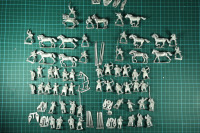

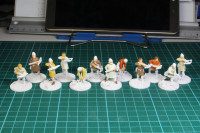
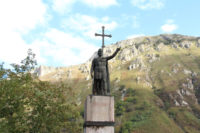
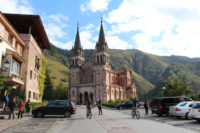
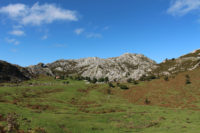


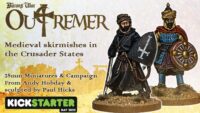
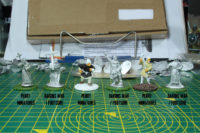
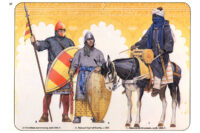
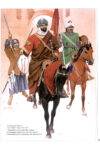
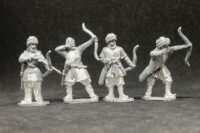
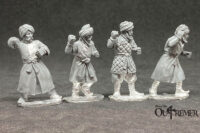
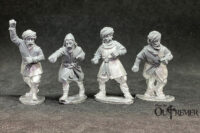












April 5th, 2022 - 16:21
Hello. The moslems of Al Andalus, as all the islamic warriors of each region, had their own pecularities. Some of them: the warriors of Al Andalus were more similar to their Christian counterparts than the moslem of other areas. But one of the main charateristics of the moslem shown on Spanish sources is that all the Moors warriors are shown with beard, being that a significative form of distinguish Moslem from Christian. In the Islamic armies of Spain you must to distinguish the Andalusian contingents from the Bereber (Almohades and Almoravids). For example, the Andalusian did not cover their mouth with a veil, that was a Bereber tradition not used in Spain. The Andalusian costumes were much more luxurious than that of the North African warriors. In Moslem Spain, all the turbants are invariably white, forget to show Andalusian with other color of turbants. And that turbants were many times embroidery and finishing in fringes. And with regard to their armies, the Andalusians adopted the croosbow from the Christian with enthusiam, to the horror of the more traditonal theorists that criticized the postponing of the traditional arab weapon, the bow. The proportion of croosbows to bows in the Andalusian armies could be 15:1. In the XV century, the proportion was even bigger: almost all the Moors infantrymen were cataloged as crossbowmen. The adarga was of course one of the more characteristic defensive weapon of the Moslem Spain. It is not known when was introduced in the Peninsula from the North of Africa but the first representations are form the middle XIII century, not seen before of that date. Also characteristic of the Moors are the spears with three balls near the point (as can be seen in Las Cantigas manuscrpt) and the use of the triangular pennons in their spears as the the Christians used.
April 5th, 2022 - 16:41
Jose Javier, thank you a lot for your insights. Very appreciated.